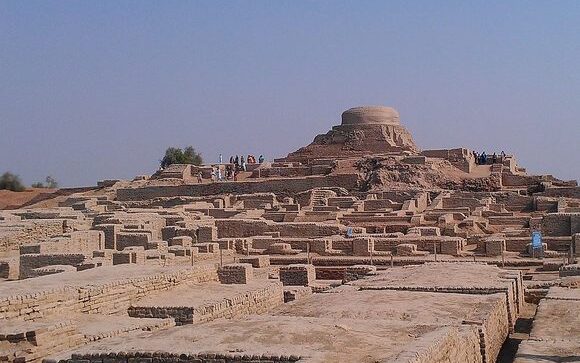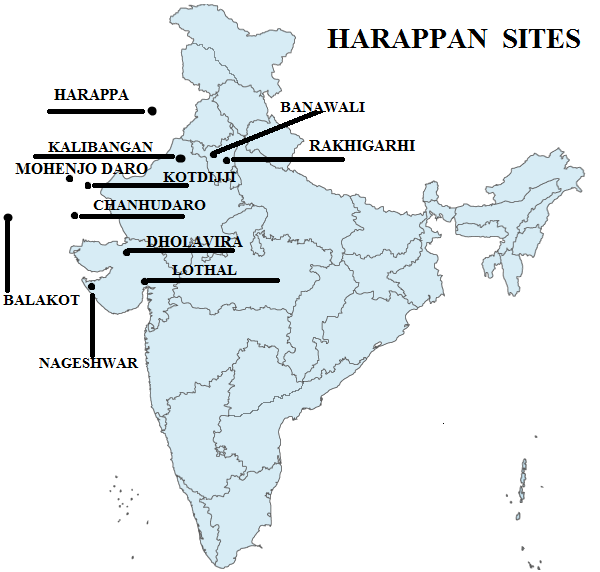

ART OF INDUS VALLEY CIVILIZATION
(Period: 3500 B.C. to 2100 B.C.)
INTRODUCTION
Art of Indus valley civilization
The Indus valley civilization developed between 3500 B.C. to 2100 B.C. and flourished on the bank of the river Indus. Two major sites of this civilization along the river were, Harappa in the north and Mohenjo-Daro in the south which is presently situated in Pakistan.
FOUNDER OF CIVILIZATION
This civilization came to notice through archaeological surveys of India as they found fossils, skeletons and statues with other household goods. The inhabitants of these civilizations are linked with other cultures on various grounds, likely:
Kakashkiyai:
The people of this community were like Sri Lankans. they used to have the house of limestone.
Equatorial:
The people of this kind had very high heads and belonged to the Aryans.
Mongolians:
These people were of Mongolian type, long face, short heighten, elongated high and pointed nose. They used to have beards but no moustaches.
The exemplary creative work of civilization can be seen in many artworks: – utensils, seals and statues like
CHARACTERISTICS OF INDUSVALLEY CIVILIZATION
-
- Indus valley culture demonstrates the significance of animals especially bull, as they were necessary for farming and also had religious significance. People worshiped and sacrificed Bulls and its image was often depicted on seals and was thought possess to power.
-
- The advanced architecture of the Indus river valley contributed to the overall success of the civilization, also in farming and agriculture as complex irrigation canals were built.
-
- There is one figure of seal, sitting in a yoga like position that seemed to represent god.
-
- Indus valley people made small figure of human using metal and clay. the figure of dancing girl in bronze show that people liked to dance. the dancing girl wears very less clothes but has lots of bangles in her arms and her hair is tied in plait.
-
- The Indus valley people used to make terracotta utensils. These utensils were decorated with dietes, images women figure and geometrical patterns. Mostly the designs have been drawn with black ink on terracotta utensils and smoothed by rubbing further a shining texture is given to the pots and utensils.
-
- The female of this period adorned themselves with ornaments, such as nose pins, bangles, earrings, armlets and bracelets etc. Different styles of hairdo were popular among women. Many things of daily use like hairpins, clips and combs have also been found. Beads are also made of terracotta. some gold and silver ornaments have also been found.
-
- Male used to wear printed shawl.
-
- Even skeletons of some animals such as dog, cow, cat, deer, sheep, and bulls of two types were found and in few places rabbits’ skeletons also found.
-
- Types of seals have been found, mainly used for decoration, trading and also had religious significance.
-
- A clay cart without wheels were also found.
FAMOUS CITIES
(i) Mohenjo-Daro and Harappa (now in Pakistan)
(ii) Roop Nagar in Punjab
(iii) Lothal in Gujrat
(iv) Kalibangan in Rajasthan
(v) Rangpur now in north Bangladesh
(vi) Alamgirpur (near Meerut 28 km from Delhi)
(vii) Banawali (fatehabad in Haryana)
(viii) Dhaula veera (near Jaipur in Rajasthan)
(ix) Some places in U.P
The Indus Valley Civilization stands as a testament to the ingenuity and cultural achievements of an ancient civilization. Its origins in the fertile river valleys, remarkable urban planning, advanced craftsmanship, and mysterious decline continue to captivate researchers and historians. By exploring the main characteristics and major sites of this civilization, we gain valuable insights into their innovative practices and societal organization. The legacy of the Indus Valley Civilization reverberates through time, reminding us of the profound contributions made by early human societies in shaping the world we live in today.